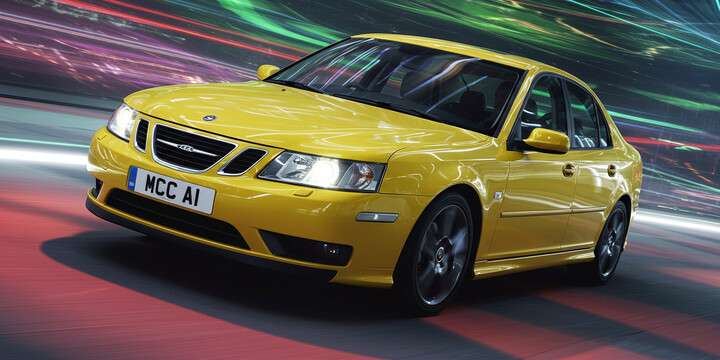
SAAB 9-3 (2007-11) 5DR SPORTWAGON 2.0T 210 AERO XWD
The SAAB 9-3 (2007-11) 5DR SPORTWAGON 2.0T 210 AERO XWD is a distinctive and practical estate car that appeals to drivers seeking a combination of sporty performance and versatile space. Positioned within the compact executive segment, this model is popular among families, active lifestyles, and those looking for a stylish yet functional vehicle. Its sleek design, with the characteristic SAAB grille and sporty wagon profile, makes it stand out on the road, while the 2.0-litre turbocharged engine delivers a lively driving experience, especially in the AERO XWD version that features all-wheel drive for enhanced grip and stability.
This SAAB 9-3 model is well-suited for daily commuting, family trips, and leisure activities. Its spacious interior and generous boot space make it a practical choice, and its reputation for reliability and solid build quality adds to its appeal. Compared to rival estate cars, the SAAB 9-3 AERO XWD is known for its refined handling, sporty dynamics, and distinctive Scandinavian design. With an average private sale value of around £2,853 and a typical mileage of approximately 110,000 miles, the SAAB 9-3 (2007-11) 5DR SPORTWAGON 2.0T 210 AERO XWD offers an attractive option for those seeking a dynamic, versatile, and reasonably priced used estate car in the UK market.

average use

The latest recorded mileage data for the SAAB 9-3 (2007-11) 5DR SPORTWAGON 2.0T 210 AERO XWD indicates that two-thirds of these vehicles have covered between 110,000 and 120,000 miles. The remaining third have mileage readings between 90,000 and 100,000 miles. This suggests that many of these vehicles are approaching the higher end of the typical mileage range for their age, which could be useful information for potential buyers or owners assessing wear and value.

vehicle values

The data indicates that for the Saab 9-3 (2007-11) 5DR Sportwagon 2.0T 210 Aero XWD, a significant majority of private sale valuations are concentrated in the £3,000 to £4,000 range, accounting for approximately 66.7% of the observations. The remaining 33.3% fall within the £2,000 to £3,000 bracket. This suggests that most private sellers value this model within the £3,000 to £4,000 segment, reflecting its perceived market worth in the current private sale market. Such distribution points to a relatively tight valuation range, with fewer vehicles expected to be listed at lower values below £3,000.

production years

Based on the available data, all of the SAAB 9-3 Sportswagon models from the 2007-2011 period, specifically the 2.0T 210 Aero XWD version, were manufactured in the year 2009. This indicates that 2009 was the predominant or possibly the exclusive production year within this model range, which could be useful information for buyers or enthusiasts interested in this specific vehicle.

colour popularity

The data indicates that the main paint colour for the SAAB 9-3 (2007-11) 5DR SPORTWAGON 2.0T 210 AERO XWD is predominantly blue, accounting for approximately 66.7% of the vehicles in the sample. Silver is also a notable colour, representing around 33.3%. This suggests a strong preference among owners for blue, with silver being a significant but less common choice.

ownership cycle

The data indicates that for the Saab 9-3 (2007-11) 5DR Sportwagon 2.0T 210 Aero XWD, the registered keepers are evenly distributed among three categories: 33.3% of vehicles have had three keepers, another 33.3% have had two keepers, and the remaining 33.3% have had four keepers. This balanced distribution suggests that the vehicle tends to be owned by a small number of owners over its lifetime, with no dominance of a particular ownership count. Such consistency could imply stable ownership patterns or a relatively steady market for this model.

engine choices

The data indicates that all vehicles of the SAAB 9-3 (2007-11) 5DR SPORTWAGON 2.0T 210 AERO XWD model in the sample are equipped with a 2.0-liter petrol engine, with no variation observed. Additionally, 100% of these vehicles are powered by petrol fuel. This uniformity suggests a consistent engine configuration and fuel type across the sample, which could be beneficial information for potential buyers seeking specific performance or fuel efficiency characteristics of this model.












